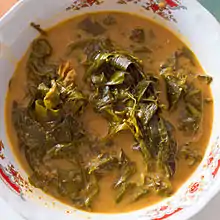Senna siamea
Senna siamea, also known as Siamese cassia,[1] kassod tree, cassod tree and cassia tree,[2][3] is a legume in the subfamily Caesalpinioideae. It is native to South and Southeast Asia, although its exact origin is unknown.[4]
| Senna siamea | |
|---|---|
_flowers_W_IMG_0540.jpg.webp) | |
| Scientific classification | |
| Kingdom: | Plantae |
| Clade: | Tracheophytes |
| Clade: | Angiosperms |
| Clade: | Eudicots |
| Clade: | Rosids |
| Order: | Fabales |
| Family: | Fabaceae |
| Subfamily: | Caesalpinioideae |
| Tribe: | Cassieae |
| Genus: | Senna |
| Species: | S. siamea |
| Binomial name | |
| Senna siamea (Lam.) Irwin et Barneby | |
| Synonyms | |
| |
It is a medium-size, evergreen tree growing up to 18 m (60 ft) with yellow flowers. It is often used as shade tree in cocoa, coffee and tea plantations. In Thailand it is the provincial tree of Chaiyaphum Province and some places in the country are named after it.
Leaves are alternate, pinnately compound, with slender, green-reddish, tinged axis and 6 to 12 pairs of leaflets on short stalks, rounded at both ends.
Uses


This plant has medicinal value and it contains a compound named barakol. The leaves, tender pods and seeds are edible, but they must be previously boiled and the water discarded. They are used in Burmese and also in Thai cuisine where one of the most well-known preparations is kaeng khilek (Thai: แกงขี้เหล็ก).
In Burmese tradition, during the full moon day of Tazaungmon, Burmese families pick Siamese cassia buds and prepare it in a salad called mezali phu thoke (မယ်ဇလီဖူးသုပ်) or in a soup.[5]
Other uses include as fodder plant, in intercropping systems, windbreaks, and shelter belts.[6] As a hardwood, it is used for ornamentation on instruments (ukeleles and guitars) and decorative products. In this capacity it is known as pheasantwood or polohala, named for the similarity of the grain to pheasant feathers.[7] It is sometimes used in Chinese furniture (known as jichimu) interchangeably with wood from the Ormosia species.[8]
Vernacular names
- Burmese: မယ်ဇလီ, mezali
- Thai: ขี้เหล็ก, khilek
- Vietnamese: muồng đen
References
- "Senna siamea". Natural Resources Conservation Service PLANTS Database. USDA. Retrieved 10 November 2015.
- Nana Garden
- AgroForestryTree Database
- "The merry, marry months start in Myanmar". The Myanmar Times. Retrieved 2018-11-02.
- Senna siamea - Winrock International Archived 2011-09-26 at the Wayback Machine
- http://www.wood-database.com/pheasantwood/
- http://www.chinese-furniture.com/cgi-bin/ccf.cgi?stt=stp&pgn=c_furniture/m_jichimu.html
